Preparing for the next flu pandemic
Rollins researchers are including vulnerable populations in flu pandemic planning.
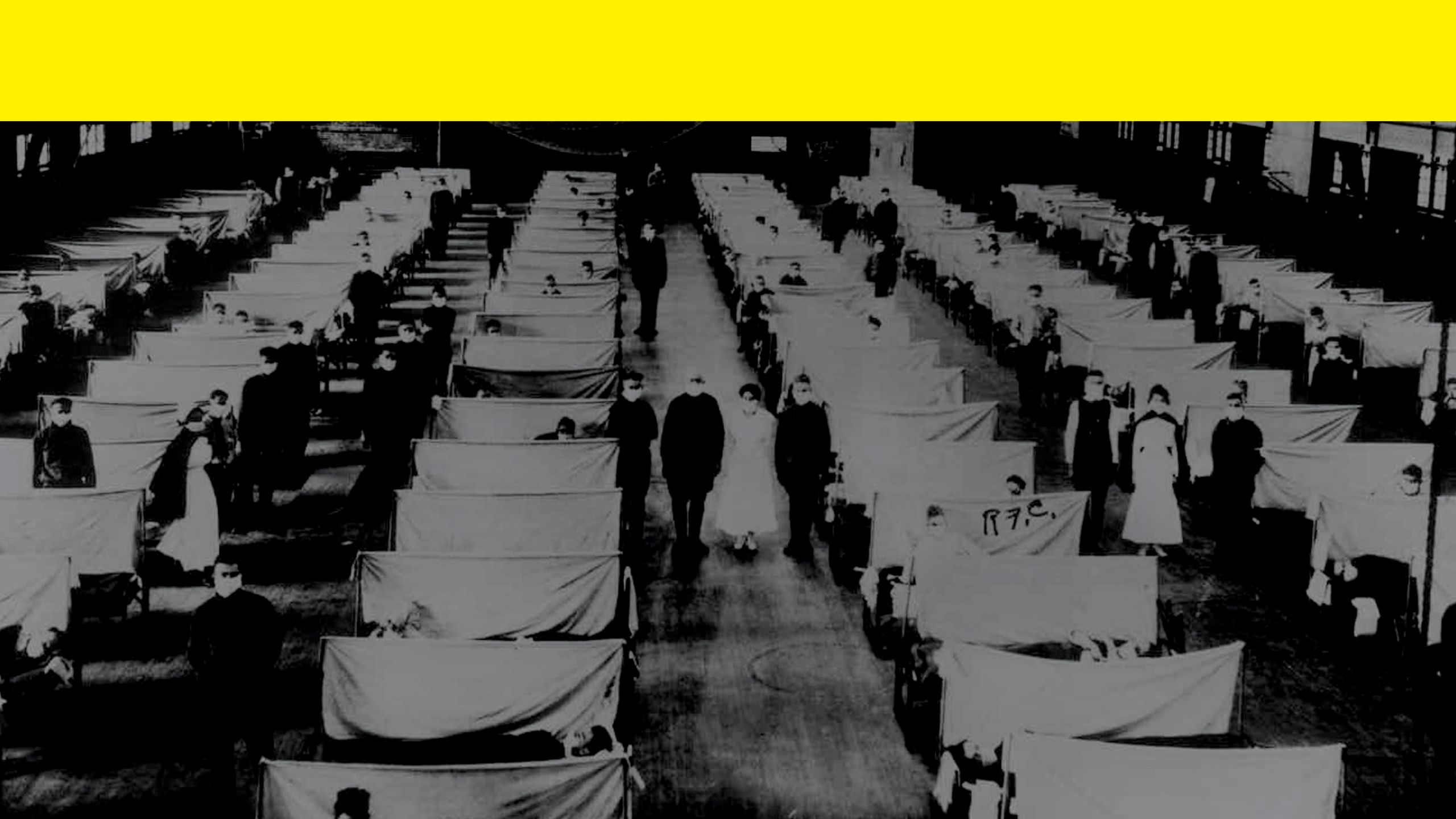
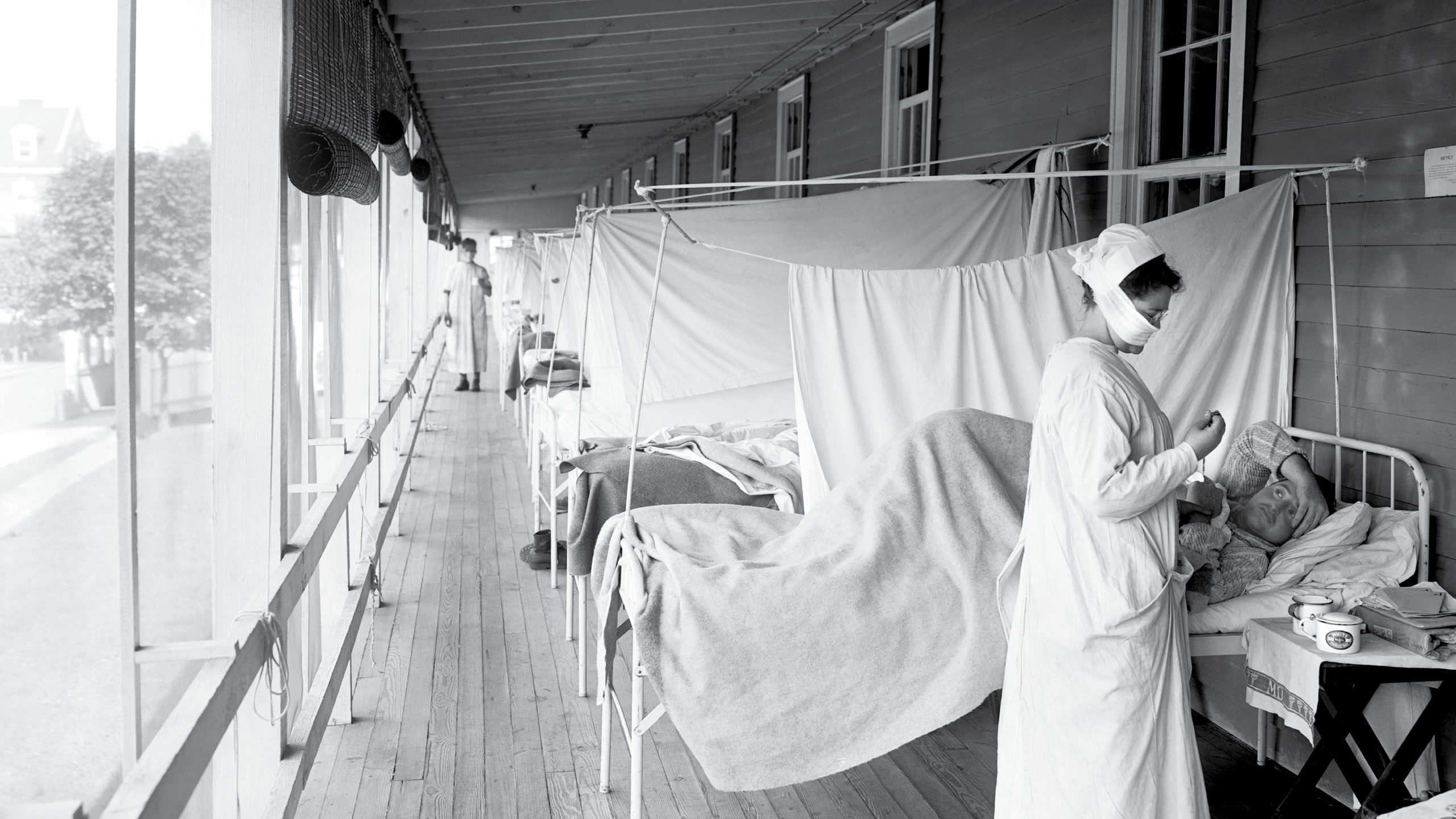
Influenza claims 12,000 to 56,000 lives in the U.S. every year, and that’s in a normal flu season. Every so often a flu pandemic emerges, like the 1918 scourge, which infected about a third of the world’s population and killed 50 million to 100 million people.
Influenza claims 12,000 to 56,000 lives in the U.S. every year, and that’s in a normal flu season. Every so often a flu pandemic emerges, like the 1918 scourge, which infected about a third of the world’s population and killed 50 million to 100 million people.

Dr. Daniel Jernigan looked out over the crowd in the Rollins Auditorium and quipped that from his vantage, it looked like a rock concert. Indeed, the director of the influenza division of the Centers for Disease Control and Prevention was addressing a venue that was filled to capacity. Reporters from the Wall Street Journal, CNN, and Wired circulated, along with a TV crew from Japan. At least 1,000 more people in 18 different countries were watching online.
The event was a one-day conference in May put on by Rollins and the CDC commemorating the centenary of the 1918 flu pandemic. Speakers were slated to address current pandemic influenza threats, the future of pandemic preparedness, and influenza prevention and control. Rollins Dean James Curran summed up what many in the audience likely felt, accounting for the outsized interest in the conference. “I’ve come to believe influenza is the most formidable and challenging virus we see in the world,” he told the audience. “There is nothing that scares me more than influenza.” This from the man who led the fight against HIV/AIDS in the epidemic’s earliest days.
Curran’s remark may confuse people outside the world of public health. Some people misunderstand the disease, labeling everything from a cold to a stomach bug as “the flu.” Many dismiss the virus’s threat, even after the severity of last winter’s flu season. More than half of Americans don’t even bother to get their annual flu shot.
Scientists who study influenza, however, mirror Curran’s concern. “Flu causes up to 56,000 deaths in the U.S. every year, and up to 646,000 worldwide,” says Lynnette Brammer 92MPH, who leads the CDC's domestic influenza surveillance team. “For what other disease would you accept that?”
Those numbers are just for the seasonal flu. A pandemic such as the one in 1918, which infected about a third of the world’s population and killed at least 50 million people, would cause many more deaths. And experts agree that a flu pandemic is a question of when, not if.
So when the next pandemic hits, could it be as devastating as its 1918 precedent? Experts agree that huge strides have been made in the last century, and much has been learned from each subsequent pandemic. Still flu is a very tricky adversary with an ability to mutate and spread rapidly. Some populations are particularly vulnerable, such as pregnant women and people in jails and nursing homes. Rollins researchers have focused their work on these populations.
“In the Center for Public Health Preparedness and Research at Rollins, we’ve been focusing on pandemic and seasonal flu for more than a decade,” says Ruth Berkelman, Rollins professor emeritus of Public Health Preparedness and Research. “We’ve also worked on preparedness for other infectious disease disasters, like Ebola and SARS, but I’d put influenza at the top of the list of threats. We have looked at vulnerable populations that have not otherwise been a focus in pandemic planning.”

Lynnette Brammer 92MPH (left) and Danielle Iuliano 00C 02MPH track emerging influenza strains as part of the CDC’s influenza surveillance team.
Lynnette Brammer 92MPH (left) and Danielle Iuliano 00C 02MPH track emerging influenza strains as part of the CDC’s influenza surveillance team.
Preparedness progress

The fields of medicine and public health have come a long way since 1918. Physicians now have flu vaccines, antivirals, and antibiotics in their arsenals. A robust surveillance system actively searches for new outbreaks and reports findings instantaneously. The medical community and the public know how to limit the spread of an outbreak with social distancing, hand washing, and quarantine.
Each subsequent flu pandemic, which hit in 1957, 1968, and 2009, brought valuable lessons. In the United States, the CDC took advantage of additional funding it received during the 2009 pandemic to make improvements it couldn’t otherwise afford.
“We went into the pandemic with four of our state public health labs able to automatically transmit data to us electronically straight out of their lab information systems into our database. We came out of the pandemic with 20-something able to do that,” says Brammer. “We went into the pandemic with a culture-based system for testing for flu and came out with a molecular-based system, so results went from taking a week to being available the same day. The midst of a pandemic is not the best time to make changes like this, but we needed to take advantage of the funding when it was available.”
The CDC has also reached out to under-resourced countries to help them set up or improve flu surveillance systems, including monitoring influenza in poultry populations, since many fear the next pandemic could spring from a novel virus circulating in birds. Some countries send specimens to the CDC to be analyzed, and the CDC can quickly develop and ship diagnostic tests when a new strain emerges.
“We’ve worked to develop strong relationships with other countries in the hope that we can share information back and forth to be better prepared when a pandemic hits,” says Danielle Iuliano 00C 02MPH, senior research epidemiologist in the CDC’s influenza division and an adjunct professor of epidemiology. “It’s unlikely the next pandemic will start in the U.S., so we have to have good relationships and open communication with countries where it’s likely to emerge.”


Allison Chamberlain, left, and Saad Omer, right, study the safety and effectiveness of the flu vaccine for pregnant women, who face a high risk of complicaitons if they get the virus. They are pictured here with Shannon Vassell.
Allison Chamberlain, left, and Saad Omer, right, study the safety and effectiveness of the flu vaccine for pregnant women, who face a high risk of complicaitons if they get the virus. They are pictured here with Shannon Vassell.
Shortfalls

Despite massive advances in flu prevention and treatment, Brammer, Iuliano, and their colleagues are anything but complacent. For one thing, 85 percent of flu vaccines are still developed in eggs, which represents “1950’s state-of-the-art technology,” quipped Dr. Luciana Borio, director for Medical and Biodefense Preparedness Policy at the National Security Council and a speaker at the Rollins/CDC pandemic conference. That means a flu strain can spread widely in the four to six months before a vaccine can be developed and distributed.
And the virus itself is a formidable, changeable adversary. “Yes, I do think we could see a pandemic as devastating as 1918,” says Brammer, who has a sign in her office that reads “Flu Is Coming.” “You can do a lot to get ready, but at the end of the day, the flu seems to find a way around everything you’ve done. It’s wildly unpredictable.”
Just look at the 2009 pandemic. Flu watchers were convinced the next pandemic would come from an avian influenza strain out of Asia, but the 2009 outbreak was a strain that was circulating in swine, H1N1 (a variant of the strain responsible for the 1918 pandemic), and it emerged from Mexico. The outbreak also began in April, when flu is not typically circulating in the Northern Hemisphere.
“The outbreak in 2009 caught everyone by surprise,” says Dr. Allison Chamberlain, acting director of the Center for Public Health Preparedness and Research and research assistant professor of epidemiology. “It started in such a strange location and at such a strange time of year. It just underscores how hard it is to stay ahead of the flu.”
Last year’s flu season was the deadliest in 40 years, killing an estimated 80,000 Americans, including 180 children. The severity of the epidemic highlighted other potential shortcomings. Demand for hospital beds and services quickly outstripped supply. Grady Memorial Hospital was forced to convert waiting rooms into in-patient units, and staff was looking into doing the same in the cafeteria or lobby when the season waned, according to Dr. Jeffrey Lennox, an infectious disease professor in the Emory School of Medicine. “If you are depending on hospitals to have extra capacity if major disaster hits, you need to rethink your plans,” he says.
Last winter’s flu season also exposed how vulnerable the U.S. is to events outside its borders. Hurricane Maria’s devastation of Puerto Rico resulted in a saline shortage in the U.S. In fact, many medications and medical supplies used in the U.S. are made in other countries, which means natural disasters could cut off or reduce supply.

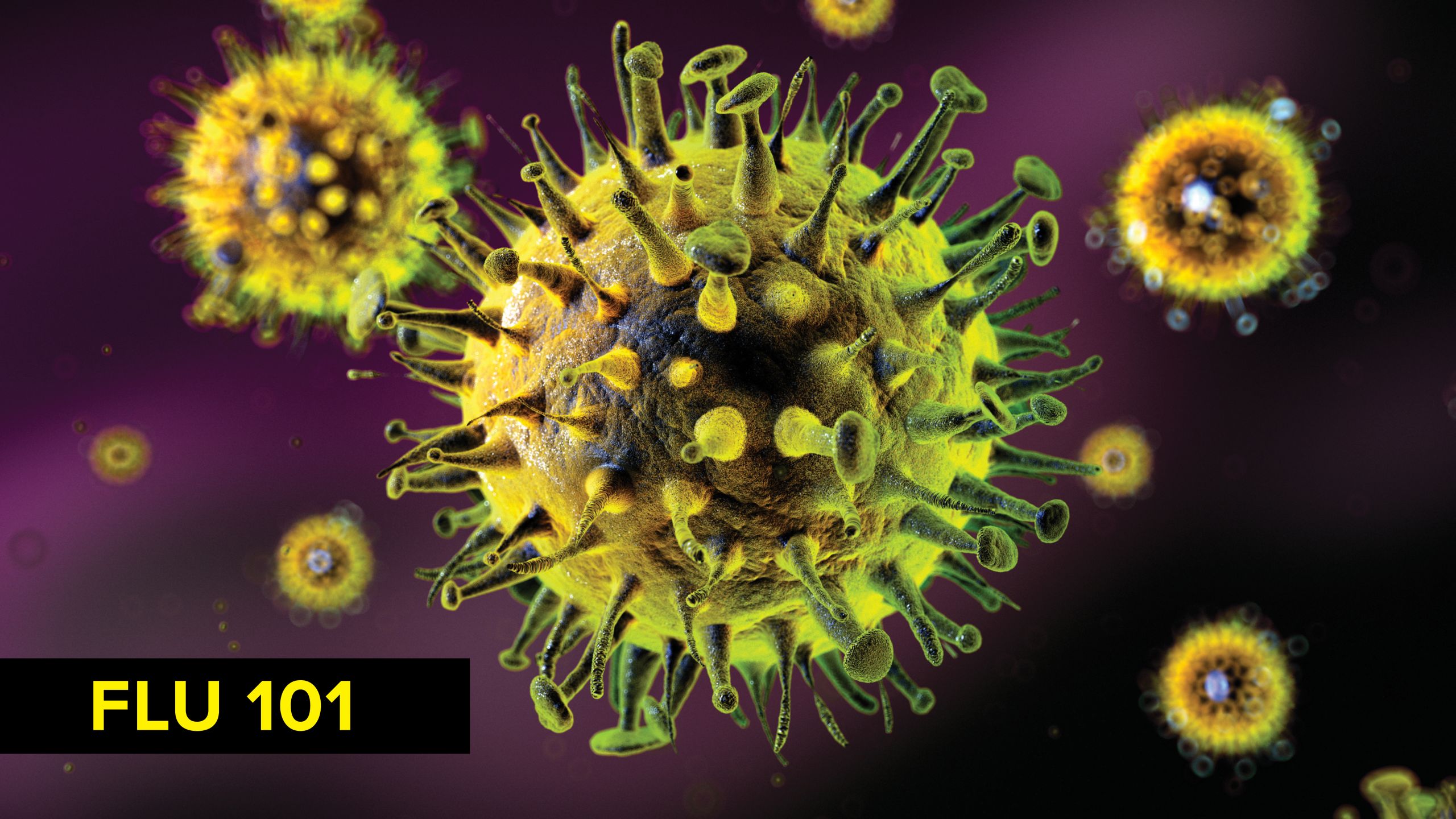
Two main types of influenza virus infect humans, A and B. Both are associated with seasonal epidemics, but only type A viruses have caused pandemics. Influenza A viruses are further broken down according to two surface proteins, hemagglutinin (HA) and neuraminidase (NA). There are 18 different HA subtypes and 11 NA subtypes, and they combine to cause different strains—H1N1, H3N2, etc. Small mutations in either of these proteins results in a new subtype, which is why flu vaccines have to be updated annually. A bigger mutation could result in a subtype that humans haven’t encountered before, so they lack any immunity to it. That situation could lead to a pandemic.
FLU 101 | Two main types of influenza virus infect humans, A and B. Both are associated with seasonal epidemics, but only type A viruses have caused pandemics. Influenza A viruses are further broken down according to two surface proteins, hemagglutinin (HA) and neuraminidase (NA). There are 18 different HA subtypes and 11 NA subtypes, and they combine to cause different strains—H1N1, H3N2, etc. Small mutations in either of these proteins results in a new subtype, which is why flu vaccines have to be updated annually. A bigger mutation could result in a subtype that humans haven’t encountered before, so they lack any immunity to it. That situation could lead to a pandemic.

Anne Spaulding found that flu vaccination rates in jails during the 2009 pandemic were dismal. She recommends including jails in pandemic preparedness planning.
Anne Spaulding found that flu vaccination rates in jails during the 2009 pandemic were dismal. She recommends including jails in pandemic preparedness planning.
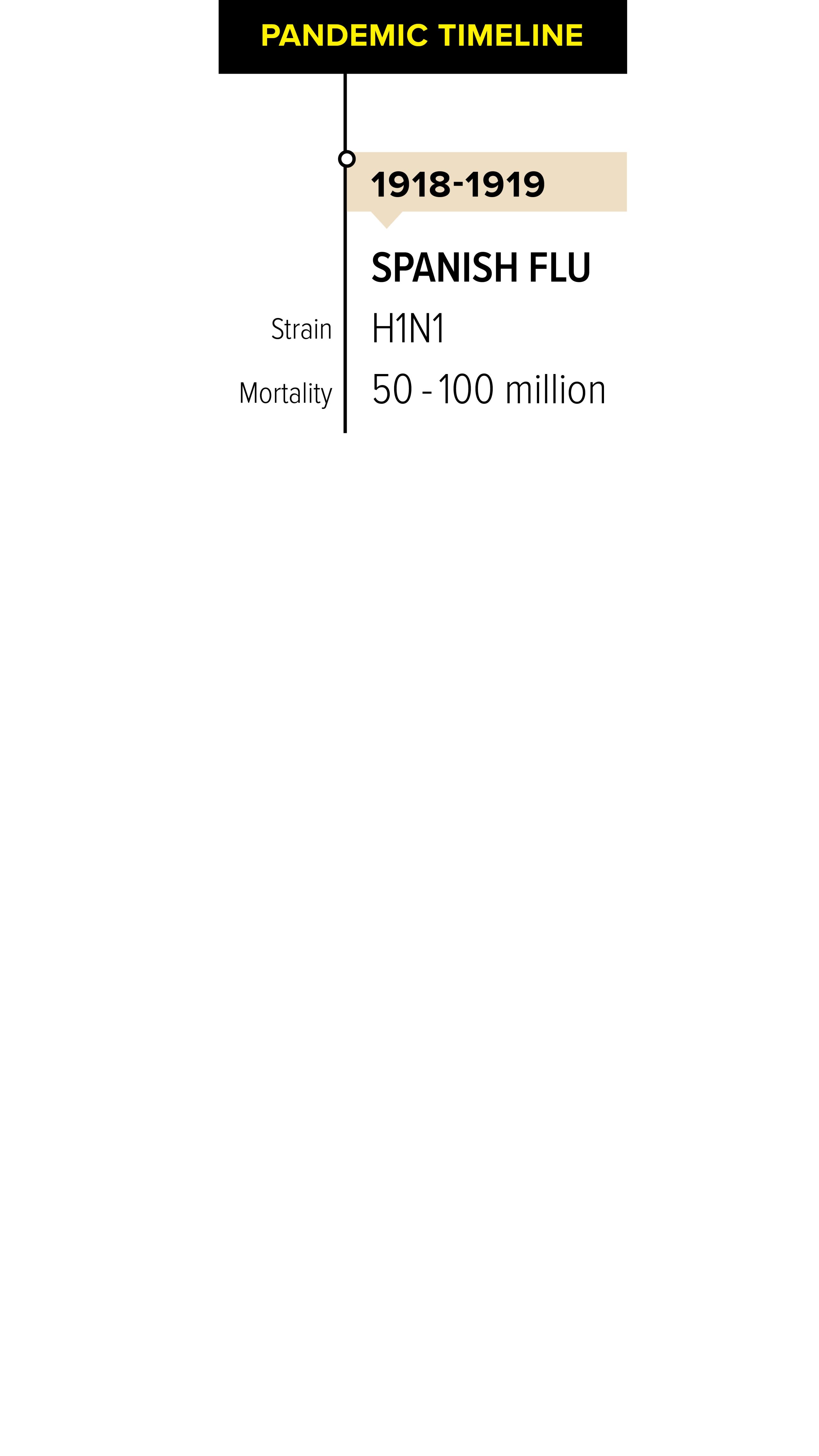
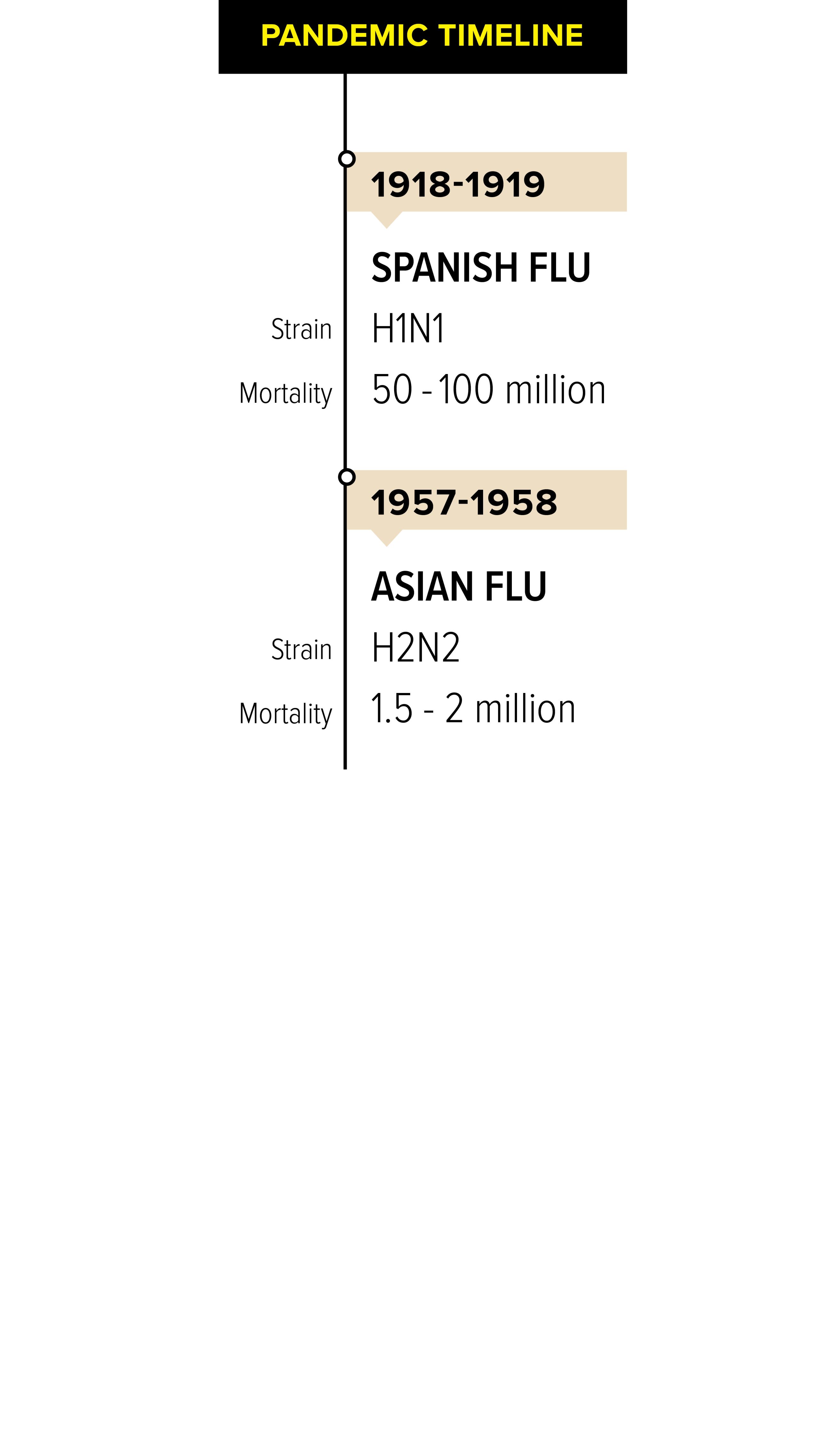
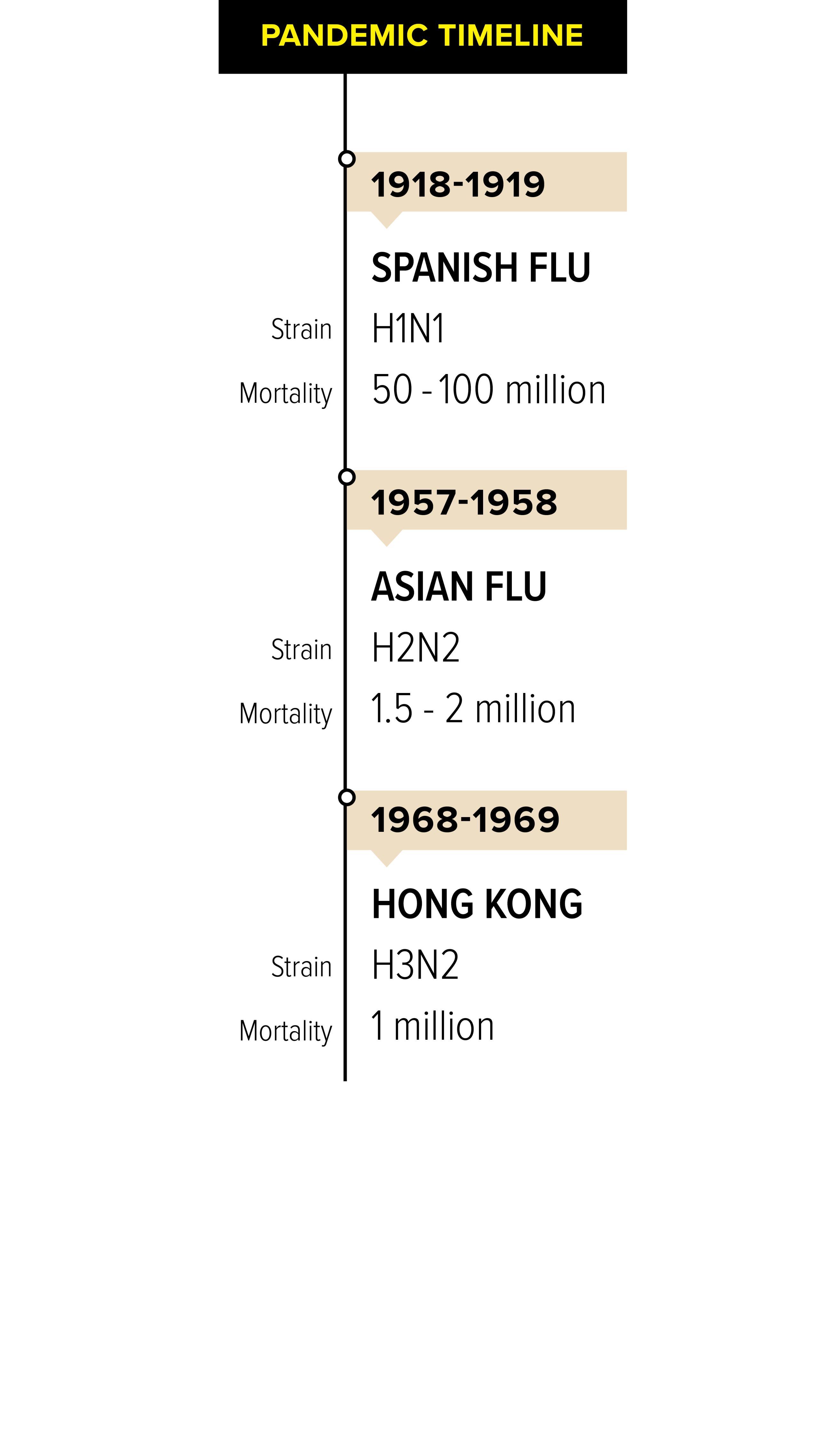
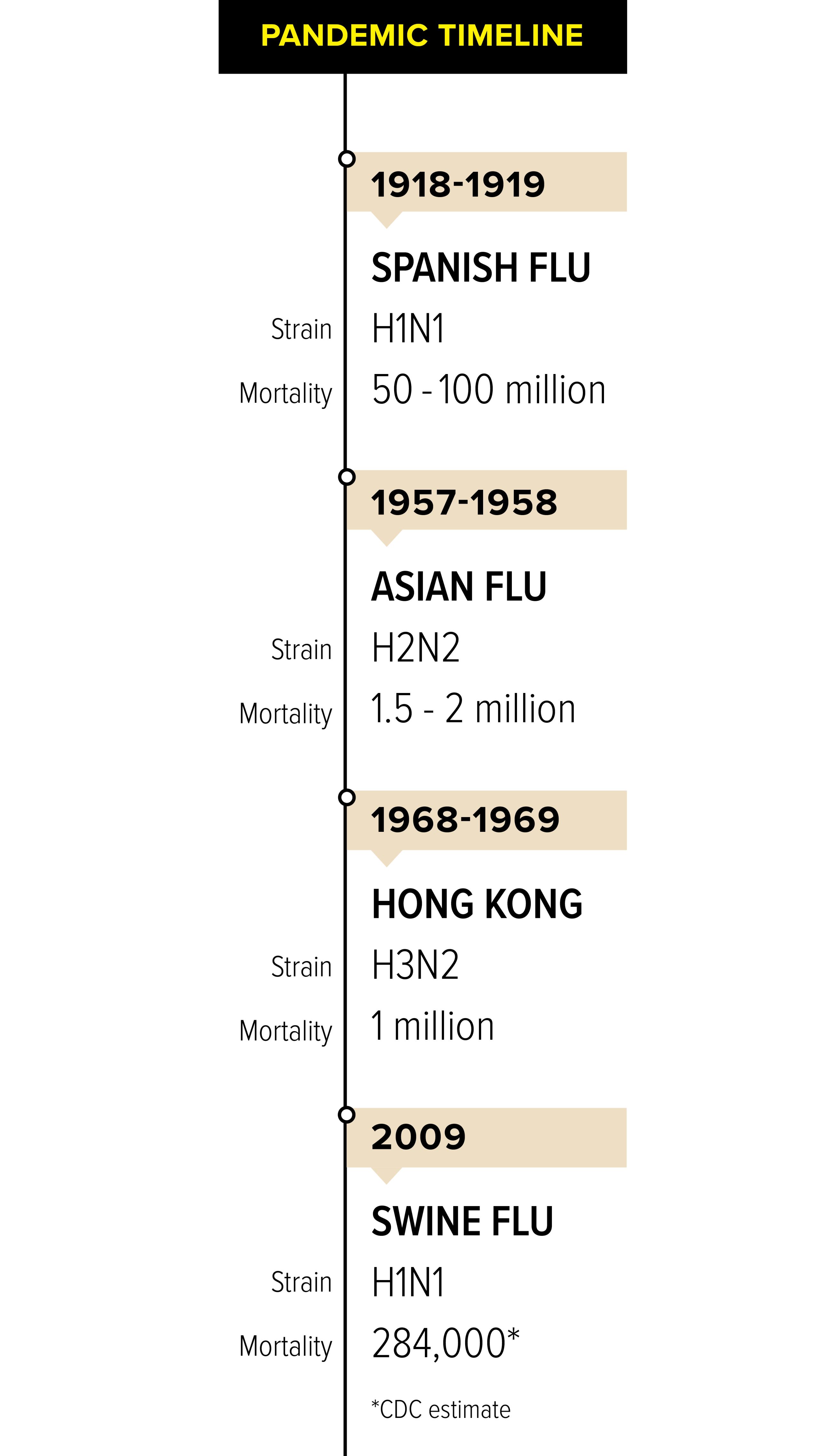
The Rollins flu fighters
Rollins scientists have focused their research on populations that would be particularly vulnerable during a pandemic. For Chamberlain and Dr. Saad Omer, the William H. Foege Chair in Global Health, that has meant concentrating on pregnant women. During both pandemics and seasonal flu, pregnant women are disproportionately affected—they face a higher risk of complications and death in addition to preterm delivery and stillbirth.
“Flu can get pretty complicated and severe for pregnant women, particularly in their second or third trimester,” says Chamberlain. “Their lung capacity is reduced because of the baby growing inside, and their response to infection changes. While pregnant women are not more likely to catch the flu than anyone else, if they do get it, the outcomes tend to be worse.”
The good news is that flu vaccines can protect pregnant women, and they are safe for both mother and baby. Omer was instrumental in establishing flu vaccines’ efficacy and safety for pregnant women through clinical trials, and he continues his work today. “We have very good evidence at this point that flu vaccines are safe for pregnant women,” he says. “And the vaccines not only protect the mother, there is strong evidence to suggest they protect the babies in their first four months of life, before they are able to be vaccinated.”
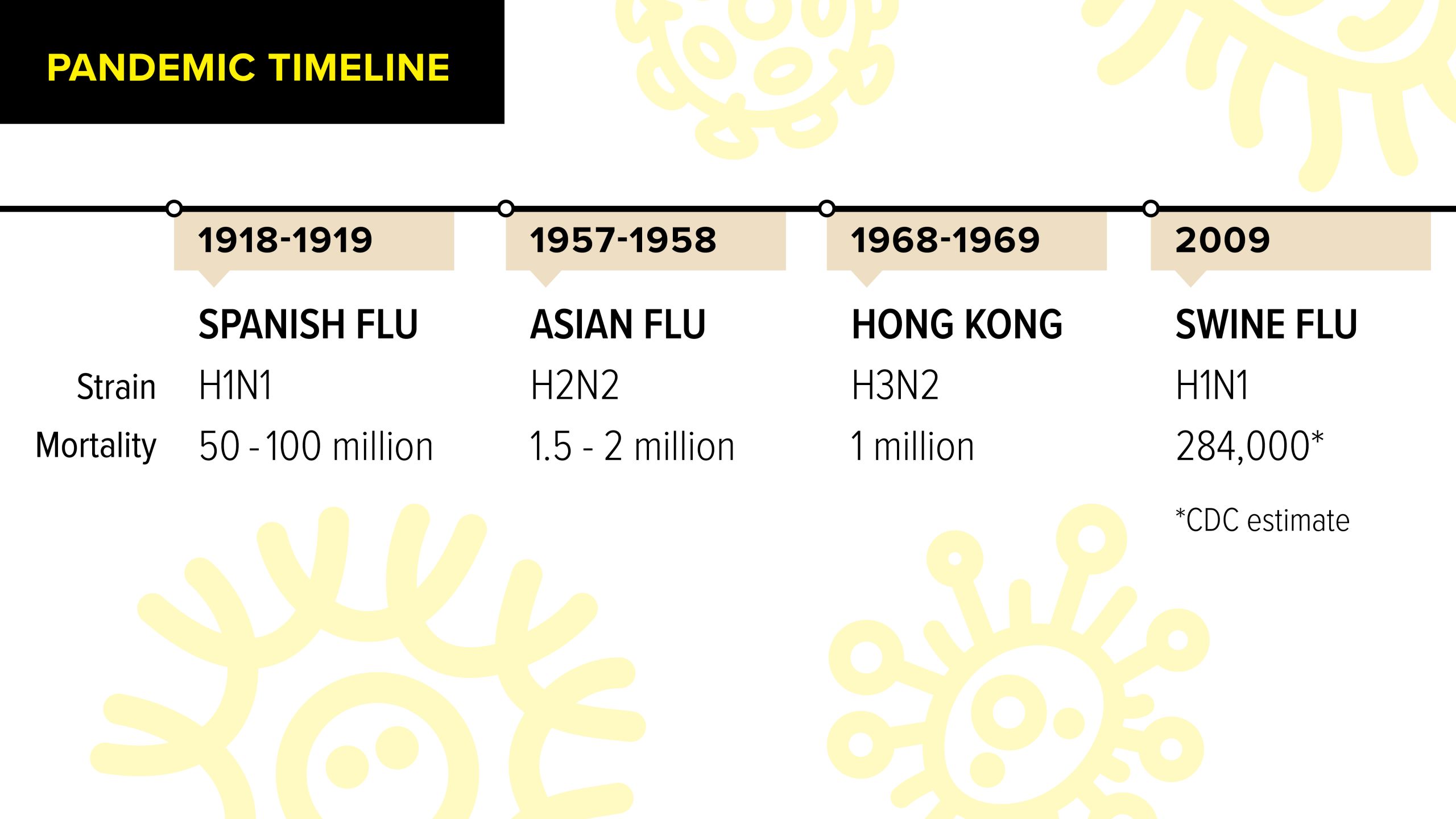
Despite these promising findings, about half of pregnant women do not get vaccinated for the flu. The reasons vary. Some are skeptical about the vaccine’s effectiveness. And to be fair, in some seasons the vaccine is only about 30 percent effective. Others are afraid the vaccine will actually give them the flu, which is a myth. And others worry about the vaccine’s effect on their baby.
“What worries me is not the scientific evidence part of vaccinating pregnant women,” says Omer. “It’s the implementation part, working with women and providers to make sure pregnant women actually get the vaccine.”
Dr. Anne Spaulding, associate professor of epidemiology and director of the Center for the Health of Incarcerated Persons, has looked at another vulnerable population—residents of jails. Specifically, she looked at how well public health authorities included correctional facilities into their response to the 2009 pandemic.
“We found authorities did a pretty good job of getting vaccines to federal prisons,” she says. “They did a mediocre job of getting it to state prisons. And when it got down to small, typical jails, they did a horrendous job.”
Spaulding found that 55 percent of jails did not receive the vaccine during the 2009 pandemic. That’s particularly troublesome, given that jails’ overcrowding makes them ideal environments for disease transmissions, and the rapid turnover of jail populations—most inmates are released within a matter of days—sends infections back out into the community.
Jails lagged in vaccinations, Spaulding discovered, due in part to misperceptions on the part of local health departments. Some jails contract with a private vendor for health care services, so local health departments thought they did not have to work with jail staff on pandemic preparedness. They assumed these private firms were supplying flu vaccines, but that was not necessarily the case.
“In this study, we found that whether a jail had privatized health care or not had no bearing on whether they had an appropriate response to the H1N1 outbreak,” says Spaulding. “State and local health departments must include all jails in their pandemic preparedness planning.”
Toward that end, Spaulding and her team developed a toolkit to foster better communication between local health departments and local jails. Has it worked? “We’ll have to wait until the next pandemic to find out,” she says.

Sarah Blake found that most nursing home residents do get annual flu vaccines, but that many of the nursing home staff do not. She in concerned since they deal with a medically vulnerable population.
Sarah Blake found that most nursing home residents do get annual flu vaccines, but that many of the nursing home staff do not. She in concerned since they deal with a medically vulnerable population.
Unlike jail inmates, nursing home residents largely do get their flu vaccines, according to Dr. Sarah Blake, assistant professor of health policy and management. Blake and Dr. David Howard, professor of health policy and management, received a CDC grant to assess long-term care disaster preparedness, and they asked nursing home staff to describe a disaster and how they handled it. They were expecting to hear about fires and hurricanes, but the disaster that was brought up again and again was a flu outbreak. So they decided to look at how nursing homes protect their residents from pandemic flu.
Influenza vaccination is a quality indicator that all nursing homes must report to the Centers for Medicare and Medicaid Services. Blake and Howard examined the accuracy of nursing home resident influenza vaccination rates in three states. From interviews with these nursing home administrators and senior staff, they found 85 percent to 100 percent of nursing home residents received the flu vaccine, excepting those who were hospitalized.
However, the situation was not as rosy for staff. Nursing homes affiliated with hospitals require staff to get annual flu vaccines, but unaffiliated facilities do not. In these facilities, vaccination rates among staff varied wildly, from 15 percent to 97 percent. “That is very concerning, considering how medically vulnerable the people they care for are,” says Blake. “More education needs to be done among staff about the importance of getting vaccinated every year.”
Experts agree that more needs to be done to prepare for the next pandemic. Dr. Julie Gerberding, director of the CDC from 2002 to 2009, addressed this need at the Rollins/CDC pandemic conference in a panel with three other former CDC directors. “Starting in 2001, we had 9/11, then anthrax, then West Nile, then SARS,” she said. “That context set the stage for the period of investment in public health which was unprecedented. The government set up preparedness plans. The CDC set up tabletop exercises. The Secretary of Health and Human Services visited almost every state for flu summits to plan for a pandemic. It was a period of remarkable cross-governmental, cross-sector engagement with substantial financial investment at the federal level. I feel really sad looking at what has happened since. We are looking at 50,000 public health jobs lost and budgets declining over time. Preparedness has to be a sustainable function—it can’t be year to year, crisis to crisis.”

History’s deadliest pandemic
The pandemic that would become the deadliest disease outbreak in history started out mildly. The first wave hit in the spring of 1918, causing the usual chills and fevers. The second wave that crashed over the world in the fall of the same year was the stuff of horror movies. Victims often died within hours or days of developing terrifying symptoms—their skin turned blue; they often coughed up blood, bled from the nose, and sometimes even the eyes; and their lungs filled with fluid that caused them to suffocate.
“You could be well at breakfast, sick at lunch, and dead at dinner,” Dr. Robert Gaynes, an infectious disease professor in Emory School of Medicine, told the audience at a one-day Rollins/CDC pandemic conference.
With no vaccines or antivirals, the disease quickly spread to all corners of the earth, helped by the movement of troops in World War I. It came to be known as the Spanish flu, not because it originated in Spain but because the Spanish press widely covered it. News outlets in countries that were embroiled in the Great War downplayed the outbreak for fear it would hurt morale.
“Never in American history has the government tried to control information as much as it did in World War I,” said John Barry, author of The Great Influenza: The Story of the Deadliest Pandemic in History and a speaker at the conference, “The government and media said there was no cause for alarm.”
Of course, people knew they were being lied to because they saw the flu strike down co-workers, neighbors, and family members. In the absence of truthful information, hysteria ensued. “People were actually starving to death because people, even family members, refused to visit them and bring them food,” said Barry.
Its lethality was not the only unusual characteristic of the Spanish flu. While most flu deaths occur in the very young and very old, more than half the people who died in the 1918 pandemic were in the prime of their lives.
By the time the pandemic died out in the spring of 1919, at least 50 million people had died—three times the number that had died in World War I. Some say that the actual death toll was likely much higher, with as many as 100 million deaths. The H1N1 strain responsible for the devastation did not go away, but it evolved into a much milder seasonal flu.


Want to know more?
Please visit Rollins Magazine, Rollins School of Public Health,
Emory News Center, and Emory University.


